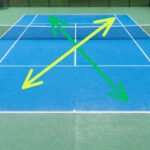Clay courts are one of the primary types of tennis court surfaces, made of crushed stone, brick, or shale. These courts are renowned for slowing down the ball and producing a high bounce, significantly influencing the style of play.
Characteristics of Clay Court Play
Playing on clay courts demands patience, endurance, and strategic use of spins. The surface allows players more time to reach the ball, leading to longer rallies and a greater emphasis on consistency and tactical placement.
The Unique Challenges of Clay Courts
Clay courts require players to adapt their game. Movements like sliding into shots are essential, and the surface often favors baseline players with strong defensive skills and the ability to construct points methodically.
Clay Courts in Professional Tennis
The most famous clay court tournament is the French Open, one of the four Grand Slam events. It is a true test of physical and mental endurance, highlighting a different aspect of tennis compared to faster surfaces.
The Influence of Clay Courts on Tennis Strategy
Playing on clay courts significantly influences tennis strategies. Players must be adept at adjusting their game to the slower pace and higher bounce, often focusing on building points rather than relying on sheer power.





